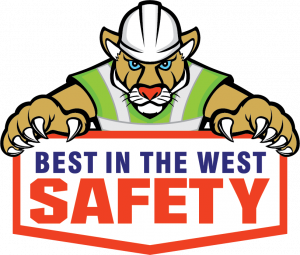
Noise Monitoring
How does hearing loss affect individuals? Hearing loss limits your ability to understand speech and reduces your ability to communicate. Individual’s ability to socialize and other daily activities is impaired, often leading to self isolation. In the workplace, it can lead to further injuries, as individuals will have a harder time hearing warning signals and clearly communicating with their coworkers.
The worst part of hearing loss is it can’t be cured or repaired, neither through surgery or hearing aids.
NIOSH Noise Monitoring Video
Noise Monitoring Questions and Answers
Is hearing loss in construction common?
According to the Bureau of Labor Statistics, occupational hearing loss is the most commonly recorded occupational illness in manufacturing, accounting for 1 in 9 recordable illnesses. More than 72% of these occur among workers in Manufacturing. These numbers are particularly disturbing considering that a person’s hearing loss must be determined to be work-related and the hearing loss must be severe enough that the worker has become hearing impaired, in order to be OSHA-recordable. Many more workers would have measurable occupational hearing loss but would not yet have become hearing impaired.
How do I know if my tools are too noisy?
OSHA recommends that workplace noise levels be kept below 85 dBA as an 8-hour time-weighted average. As the noise level increase, your hearing is damaged more quickly. Research indicates that your hearing can be damaged by regular 8-hour exposures to 85 dBA.
NIOSH also recommends a 3 dBA exchange rate so that every increase by 3 dBA represents a doubling of the amount of the noise and halves the recommended amount of exposure time.
How can I check if my job site averages 85 dBA?
You can use a noise dosimeter to check the average noise exposure during the work day. Sound level meters are also useful tools for checking the current dBA and can be used to check how loud your tools and work environment are.
If you don’t have neither a noise dosimeter or sound level meter, you can also use your smartphone to check your noise exposure. The National Institute of Occupational Safety and Health (NIOSH) developed a completely free app and is verified to have an accuracy of +- 2 dBA. You can find the NIOSH Sound Level Meter app here.
What can be done to prevent hearing loss?
The first and the best way to prevent hearing loss is to eliminate or substitute the source of hazardous noise. When elimination is not possible, substitution of the loud equipment for quieter equipment may be the next best alternative to protect workers from hazardous noise.
The second option is using engineering and administrative controls: Engineering controls require physical changes to the workplace such as redesigning equipment to eliminate noise sources and constructing barriers that prevent noise from reaching a worker. If engineering controls are not feasible, employers can explore potential administrative controls, such as scheduling that will minimize exposure, providing quiet and convenient lunch and break areas.
The last option in protecting workers from hazardous noise is using Personal Protective Equipment (PPE): When all options for eliminating or reducing the noise at the source are exhausted, hearing protection devices such as earplugs or earmuffs should be made available to workers, at no cost, to sufficiently attenuate noise so that their “real-world” exposure is below 85 dBA as an 8-hour TWA.
My job site is too noisy. What can I do?
First, if you feel comfortable, speak with your supervisor. If you are a union member, raise the issue with your union representative. You can also call or write OSHA.